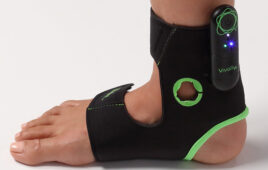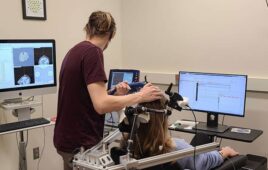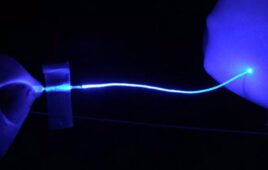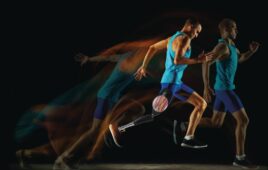Cedars-Sinai Regenerative Medicine Institute will be part of 5-center consortium collecting and analyzing thousands of pieces of data to develop ‘global’ view of neuromuscular disorders
Investigators at the Cedars-Sinai Board of Governors Regenerative Medicine Institute have received a grant from the National Institutes of Health to participate in a consortium taking the study of motor neuron disorders – such as Lou Gehrig’s disease and spinal muscular atrophy – to a new, comprehensive perspective.
“We will be working as part of an NIH initiative to create databases of disease ‘signatures’ by generating and analyzing thousands of data points. Scientists often focus on very small things, such as a single signaling pathway in cells or a single gene or protein that is involved in some way with disease development, but identifying and correcting one component rarely leads to a cure. This is especially true in the brain because its networks are very complex,” said Clive Svendsen, PhD, professor and director of the Board of Governors Regenerative Medicine Institute, principal investigator of Cedars-Sinai’s part of the study.
Svendsen, the Kerry and Simone Vickar Family Foundation Distinguished Chair in Regenerative Medicine, compares this shift in perspective to the way meteorologists began predicting weather years ago – viewing global trends and collecting vast amounts of data to create a forecast for a specific place and time.
The grant is part of an NIH initiative called the Library of Integrated Network-based Cellular Signatures, or LINCS, program, which aims to develop a “library” of molecular signatures that describes how different cells respond to proteins, genes, chemicals – essentially anything that may come in contact with or change the cell or its activity.
Cedars-Sinai is a member of a group, NeuroLINCS, studying motor neuron disorders, which include Lou Gehrig’s disease, also known as amyotrophic lateral sclerosis, or ALS, and spinal muscular atrophy. The NeuroLINCS study will be coordinated by researchers at the University of California, Irvine, with additional collaborators at the Gladstone Institutes at the University of California, San Francisco, Johns Hopkins University and the Broad Institute.
NeuroLINCS is one of six consortiums recently funded through NIH’s LINCS program to study diabetes, cancers and other diseases using cell lines and specialized stem cells called induced pluripotent stem cells. Derived from a patient’s own skin samples and “sent back in time” through genetic manipulation to an embryonic state, these cells can be made into any cell of the human body.
The Board of Governors Regenerative Medicine Institute, which has developed a national reputation for the quality of its induced pluripotent stem cells, was asked to provide the stem cells for all of the consortiums. The cells are produced in the Regenerative Medicine Institute’s Induced Pluripotent Stem Cell Core Facility, directed by Dhruv Sareen, PhD, assistant professor of biomedical sciences and faculty research scientist with the Department of Biomedical Sciences.
Cedars-Sinai and the Regenerative Medicine Institute also will play a major role in the data generation phase of the study. New technology enables scientists to “mine” data on a large scale, such as measuring millions of proteins in a single sample – an area of expertise for Jennifer Van Eyk, PhD, director of Cedars-Sinai’s Advanced Clinical Biosystems Research Institute and the Erika J. Glazer Chair in Women’s Heart Health. She will be co-principal investigator of Cedars-Sinai’s part of the study and will provide protein analysis for all NeuroLINCS collaborators. Other teams of experts will collect data on genetic material and the way genetic information is relayed to proteins within cells.
Svendsen said the data analysis teams will collaborate to create computer programs to pull all the information together.
“We may be looking at many thousands of data points, but using algorithms to create a ‘cloud’ of information, we expect to see a ‘signature’ emerge that shows us the relationships between proteins, genes and RNA in the cell. There will be a specific signature for healthy controls and a different one for the disease, such as Lou Gehrig’s,” Svendsen said. “Once we have that, we can try to ‘punch holes’ in the disease signature by hitting the cell with a small molecule to see how the cloud of information changes. The ultimate goal is to morph the disease cloud back into a healthy cloud. But right now, we don’t know what the disease state is. This is what we want to find out.”
At Cedars-Sinai, Svendsen and Sareen often collaborate on ALS and other motor neuron disease studies with Robert H. Baloh, MD, PhD, director of neuromuscular medicine and the ALS Program in the Department of Neurology.
“We have a strong mutual interest in developing personalized medicine for patients suffering from neurodegenerative diseases,” Svendsen said. “We want to be able to create in a dish the motor neurons that mirror an individual patient’s disease so we can see how quickly or slowly degeneration occurs. We also want to be able to interact with the disease model and see if we can slow it down in the dish. If so, theoretically, we should be able to slow it down in the patient as well. Through the LINCS grant, big data technology enables us to explore motor neurons in greater deal and gives us a much more sophisticated way of producing and analyzing these personalized models.”




